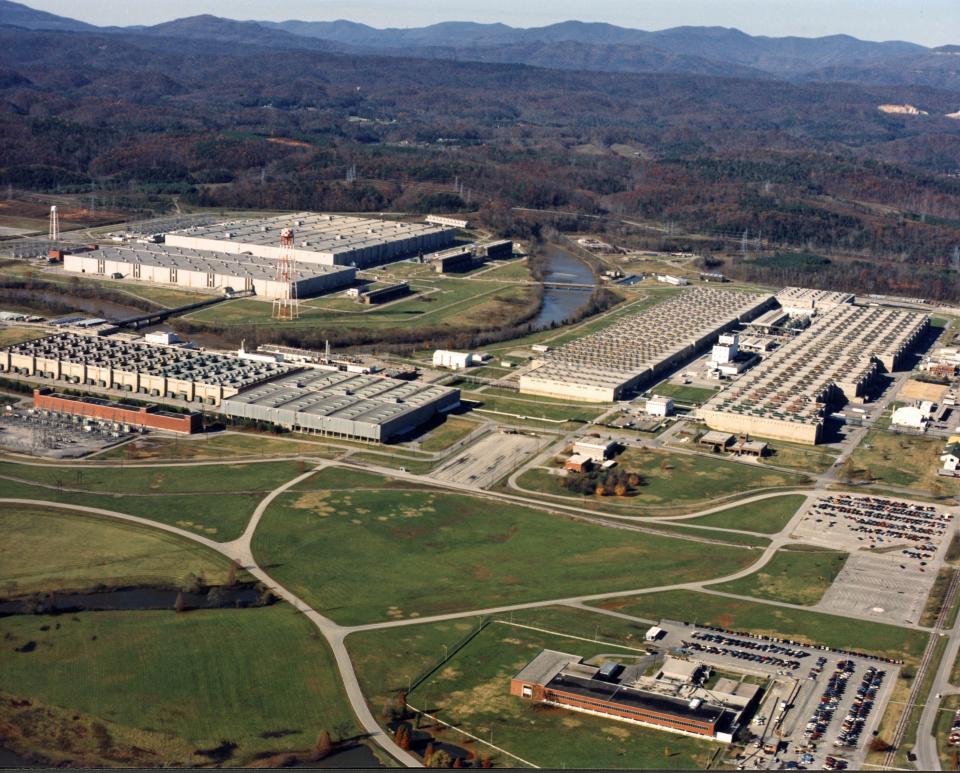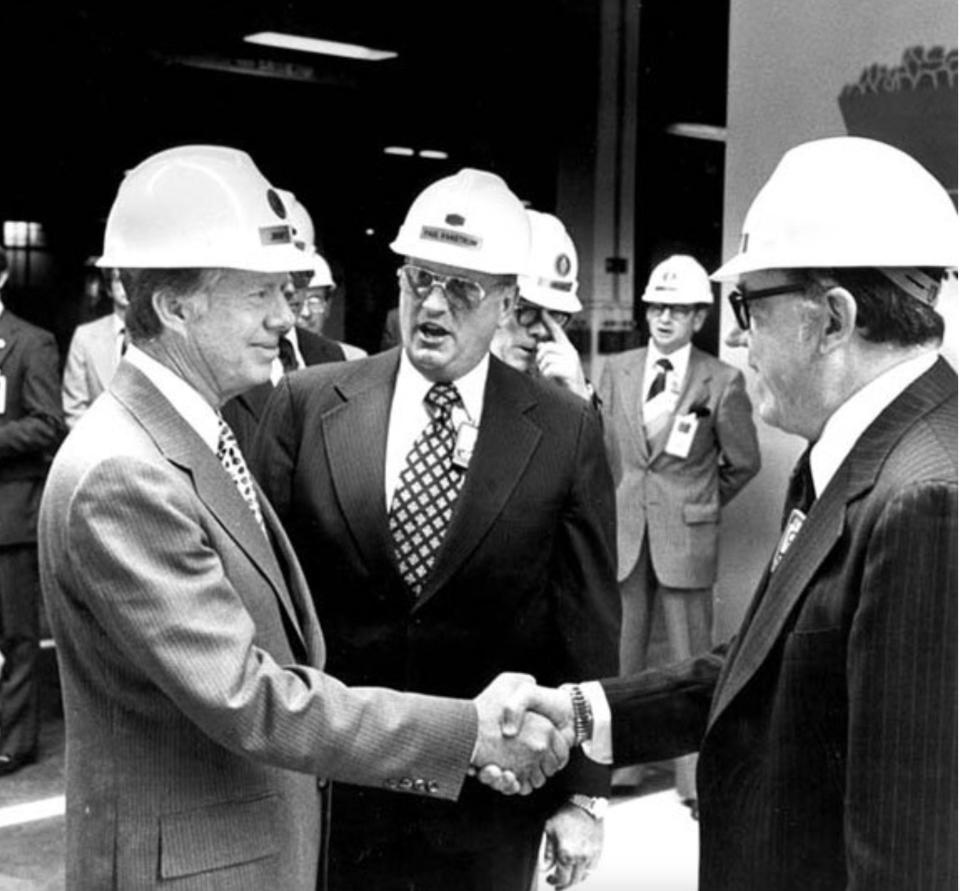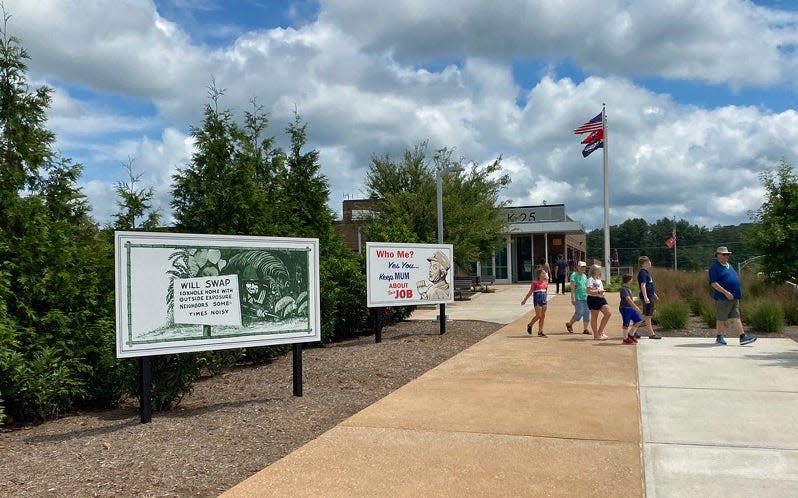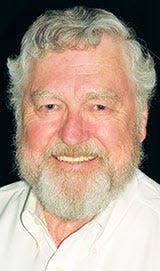K-25 workers, family and friends invited to April 27 reunion in Oak Ridge
Many of you readers of "Historically Speaking" will have worked at K-25 or have family or friends who have worked there over the years. The work done there accomplished much more than just providing feed material to the Y-12 Plant’s electromagnetic separation process to help provide the uranium 235 for "Little Boy," the first atomic bomb ever used in warfare and which helped win World War II.

After Dec. 26,1946, K-25 produced the highly enriched uranium for all the nation’s nuclear weapons until 1964 - when the K-25 Building was shut down. The increased capacity resulting from adding Building K-27 in December 1945 enabled the gaseous diffusion process to produce weapons grade uranium 235 by December 1946.
At that time, the Y-12 Plant’s electromagnetic separation process of Alpha and Beta Calutrons was shut down except for Building 9731 and Building 9204-3 (Beta 3). These two buildings began to separate other isotopes, which greatly expanded the newly forming Nuclear Age by contributing to the Graphite Reactor’s creation of radioactive isotopes for medical purposes and industrial uses.

K-25 became the world’s only production facility for highly enriched uranium until Russia duplicated the Y-12 electromagnetic separation process. Their units were stacked vertically rather than in a horizontal racetrack configuration. SU-20 is an example of their electromagnetic separation process. https://www.sciencedirect.com/science/article/abs/pii/S0168900299006397
K-25 expanded by adding additional enrichment stages in buildings K-27 (December 1945), K-29 (January 1951), K-31 (December 1951), and K-33 (November 1954). Over time, there developed a market for enriched uranium at a much lower percentage for nuclear weapons. Nuclear reactors were being constructed for research purposes and for electrical power production.
President Jimmy Carter visited Oak Ridge in May 1978. Do you recall the preparations required for that? It is said he only spent 23 minutes in a display area that was air conditioned just for his visit to a gaseous diffusion display cell. That cell was used for years as a demonstration cell and many people benefited from the unique air-conditioned space in the gaseous diffusion process building K-33.
Speaking of that, do you recall the “Roosevelt Cell” and why it got that name? Also when was it created?
The “toll enrichment” program, which supplied low enriched uranium to nuclear reactors across the nation and to other countries, resulted in such improvement actions at K-25 as the CIP (Cascade Improvement Program), and CUP (Cascade Uprating Program). These programs were often pronounced together as “Sip/Cup” and consisted of a $1.5 billion program to increase productivity through efficiency improvements in all aspects of the gaseous diffusion process.

If you worked at K-25 during any of these eras, you know the story from personal experience.
I am proud to announce the upcoming reunion of the K-25 site past employees to be held on Saturday, April 27, 2024, from noon to 3 p.m.
The following is provided by Brad Parrish.
OIf you worked at K-25 in the past, then you are cordially invited to the K-25 Reunion! The reunion is open to retirees, past and present employees, and contractors. If you worked at K-25/ETTP, BNFL, USEC/Centrus, or the Security Force, please come and invite your co-workers and work friends. Spread the word!
The reunion will occur outside the K-25 History Center (old K-25 Fire Hall at 652 Enrichment St). We plan to have a covered tent in the parking lot with tables and chairs, but feel free to bring your own lounge chairs if you'd like to sit around and visit. The K-25 History Center will be open for you to visit at a discounted rate of $3 per person and will have many reminders of K-25's early days and our times together.
Most of the K-25 Site's past plant managers dating back to the mid-1970s have confirmed their attendance, including Waldo Golliher, Gordon Fee, Bob Merriman, Bob Eby, and hopefully, Harold Conner.
Current sponsors include CROET, Nuclear Care Partners, Munsey Pharmacy, Coalition of Oak Ridge Retired Employees, and the K-25 History Center - plus, music by the Matthew Hickey Band, sponsored by Marvin Yarber.
A banner will be at the front of the site shortly to notify passersby about the reunion, and it will serve to welcome our attendees when they arrive on April 27. Please keep praying for good weather.
It will be great to be onsite again with all of you!
Pam Toon and Brad Parish, are the organizers. Contact them for more information: 865-804-2723 (Brad) or 865-368-0996 (Pam).
***
Make your plans now to join other past and present employees who have worked at the K-25 Site over the years, including those who have worked there after the gaseous diffusion process was shut down Aug. 27, 1985, and the site closed down in 1987. This reunion will be a good opportunity to see people you worked with and get updated on what they have been doing since K-25, as well as sharing mutual experiences.
See you on Saturday, April 27, 2024, from noon to 3 p.m.
Oak Ridge City Historian D. Ray Smith's "Historically Speaking" column appears in The Oak Ridger each week.

This article originally appeared on Oakridger: K-25 workers, family and friends invited to April 27 reunion

